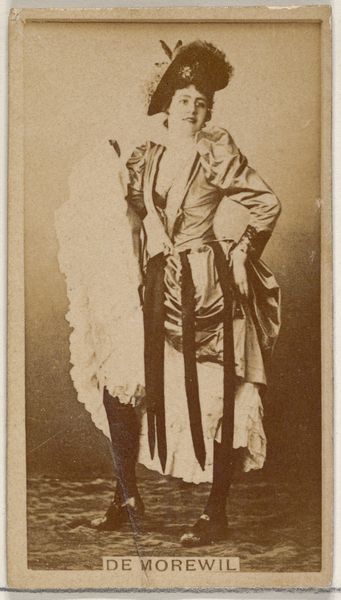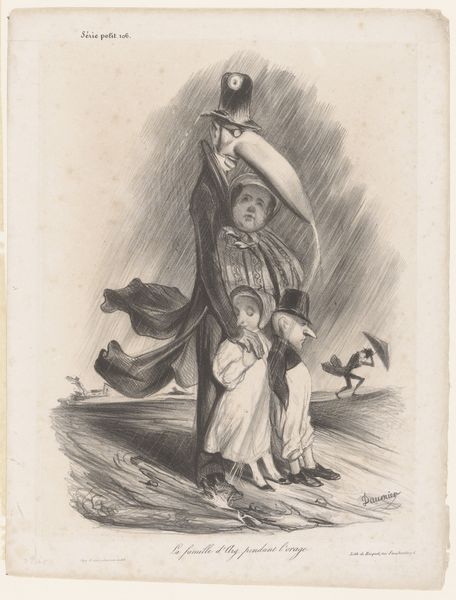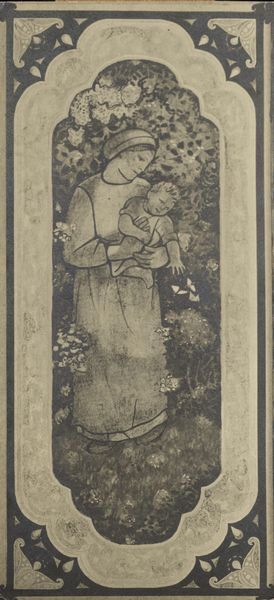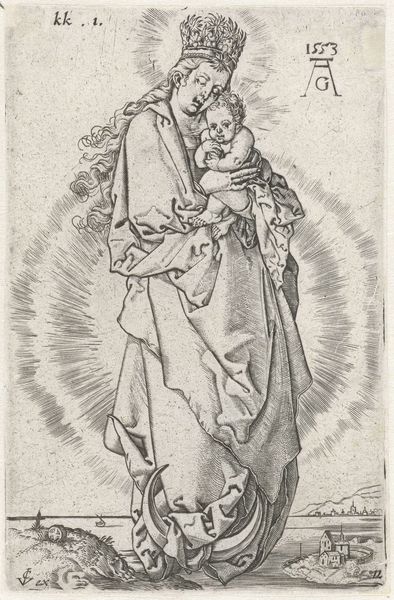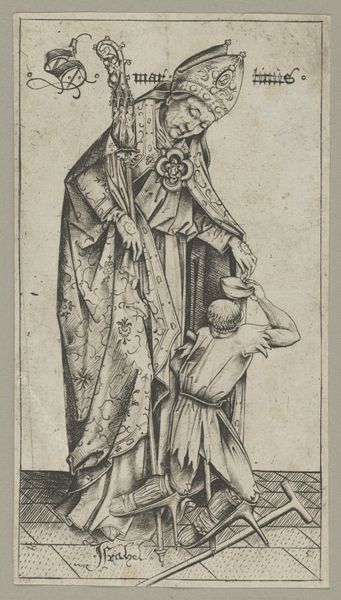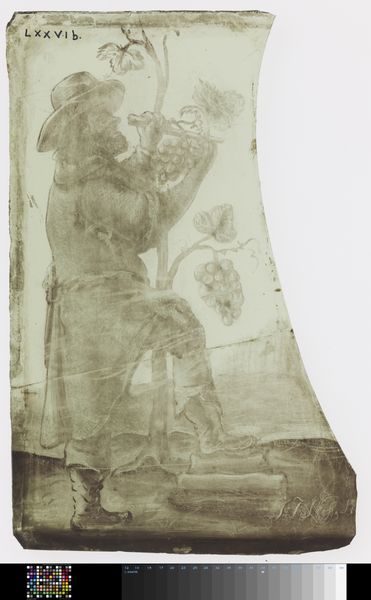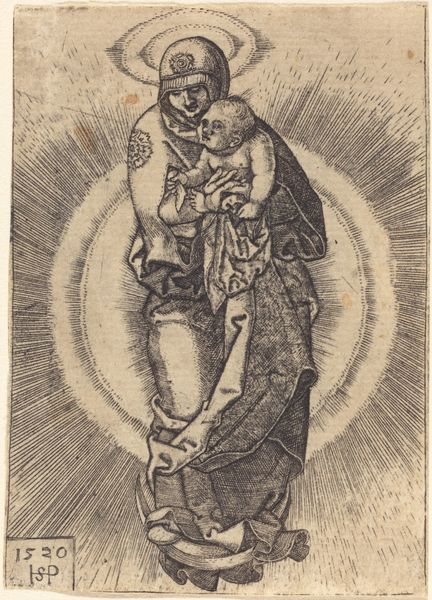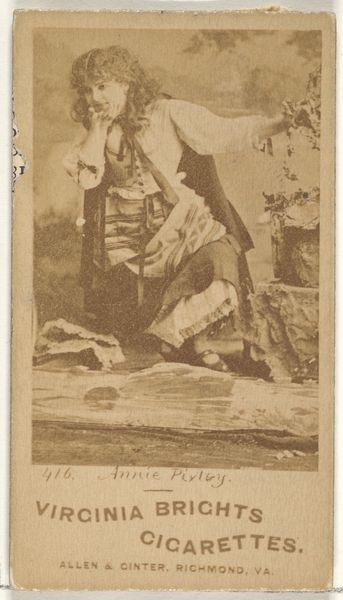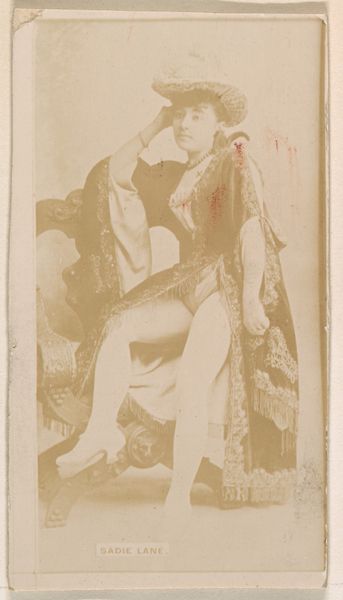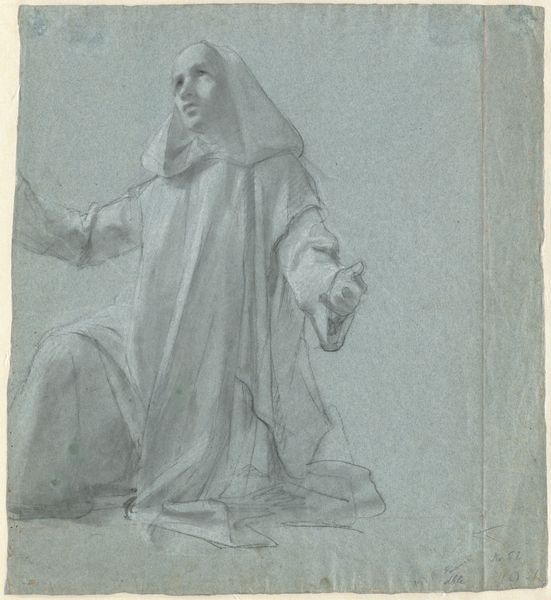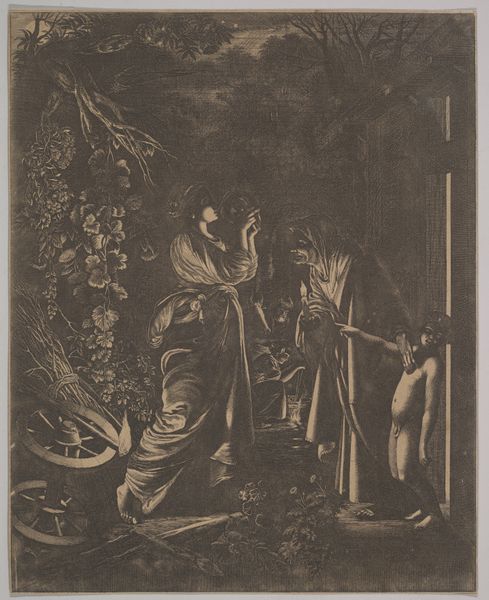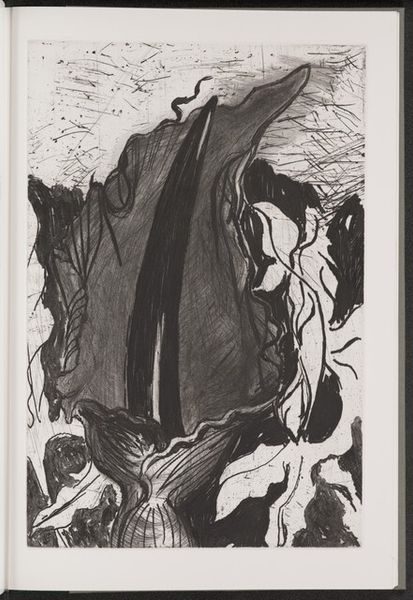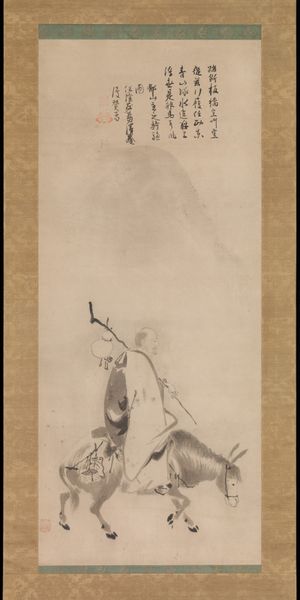
Fotoreproductie van een schilderij van een vrouw met tamboerijn c. 1865 - 1900
0:00
0:00
Dimensions: height 277 mm, width 214 mm
Copyright: Rijks Museum: Open Domain
Editor: So, this is a photographic reproduction of a painting called "Fotoreproductie van een schilderij van een vrouw met tamboerijn," made sometime between 1865 and 1900 by Laurens Lodewijk Kleijn. I’m immediately struck by how theatrical she looks, almost staged. What's your take on this, especially given the time period? Curator: This image presents an intriguing intersection of portraiture, genre painting, and burgeoning photographic reproduction. The theatricality you mention isn't accidental; it’s carefully constructed. Consider the performative aspect of identity, particularly for women in the late 19th century. How might this "genre painting" reinforce or subvert expectations about femininity and cultural expression through its Orientalist tropes? Editor: Orientalist tropes? I hadn’t thought of it that way. It's the tambourine, isn't it? I just saw it as a woman with an instrument, a portrait of a musician, maybe. Curator: Precisely. The tambourine, her costume, and the overall composition are signifiers that place her in a culturally "othered" space. This was a common visual language used to explore and often exoticize non-Western cultures. I wonder about the subject. Who was this woman, and what did it mean to depict her in this way? Was she complicit, or was she objectified? The gaze, her presentation… how are these elements shaping our understanding of gender and race? Editor: So, it’s not just about appreciating the art, but questioning the power dynamics within the image itself. Curator: Absolutely. It's about using the artwork as a lens to understand the historical, social, and political forces at play. By looking closely, we can start to deconstruct the messages that these images transmit, and challenge their influence on contemporary thought. Editor: I guess I was mostly thinking about composition and light, but now I’m considering the broader story this image tells – or perhaps hides. It's made me reconsider how easily stereotypes are packaged and reproduced through art. Curator: Indeed. The intersection of art, history, and social justice encourages this critical analysis, revealing layered interpretations. Hopefully it sparked curiosity and desire to unveil hidden narratives.
Comments
No comments
Be the first to comment and join the conversation on the ultimate creative platform.
